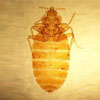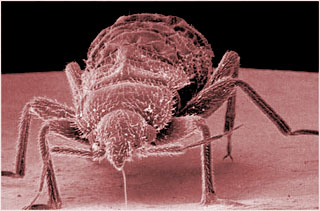Categories
- Bed Bug
- Bed Bug Cream
- BED BUG DATABASE
- Bed Bug Home Remedies
- Bed Bug Oil
- Bed Bug Remedies
- Bed Bug Spray
- Bed Bugs New York
- Bed Bugs Vancouver
- Bed Bugs World
- Bed Bugs American Samoa
- Bed Bugs Canada
- Bed Bugs Guam
- Bed Bugs North Mariana islands
- Bed Bugs Puerto Rico
- Bed Bugs United States
- Bed Bugs Alabama
- Bed Bugs Alaska
- Bed Bugs Arizona
- Bed Bugs Arkansas
- Bed Bugs California
- Bed Bugs Colorado
- Bed Bugs Connecticut
- Bed Bugs Delaware
- Bed Bugs Florida
- Bed Bugs Georgia
- Bed Bugs Hawaii
- Bed Bugs Idaho
- Bed Bugs Illinois
- Bed Bugs Indiana
- Bed Bugs Iowa
- Bed Bugs Kansas
- Bed Bugs Kentucky
- Bed Bugs Louisiana
- Bed Bugs Maine
- Bed Bugs Maryland
- Bed Bugs Massachusetts
- Bed Bugs Michigan
- Bed Bugs Minnesota
- Bed Bugs Mississippi
- Bed Bugs Missouri
- Bed Bugs Montana
- Bed Bugs Nebraska
- Bed Bugs Nevada
- Bed Bugs New Hampshire
- Bed Bugs New Jersey
- Bed Bugs New Mexico
- Bed Bugs New York
- Bed Bugs North Carolina
- Bed Bugs North Dakota
- Bed Bugs Ohio
- Bed Bugs Oklahoma
- Bed Bugs Oregon
- Bed Bugs Pennsylvania
- Bed Bugs Rhode Island
- Bed Bugs South Carolina
- Bed Bugs South Dakota
- Bed Bugs Tennessee
- Bed Bugs Texas
- Bed Bugs Utah
- Bed Bugs Vermont
- Bed Bugs Virgin Islands
- Bed Bugs Virginia
- Bed Bugs Washington
- Bed Bugs Washington DC
- Bed Bugs West Virginia
- Bed Bugs Wisconsin
- Bed Bugs Wyoming
- BedBug Removal
- BedBugs in Michigan
- Canada Bed Bugs
- Do it yourself Bed Bug
- Exterminator Bed Bugs
- Health
- Pest Inspection
- Toronto Bed Bugs
- Welcome to Bed Bugs
Registry Sites List
- Bronx Bed Bug Registry Infestation Maps, Residential And Hotel
- Brooklyn Bed Bug Registry Infestation Maps, Residential And Hotel
- Manhattan Bed Bug Registry Infestation Maps, Residential And Hotel
- Nyc Bed Bug Registry Infestation Maps, Residential And Hotel
- Queens Bed Bug Registry Infestation Maps, Residential And Hotel
- Staten Island Bed Bug Registry Infestation Maps, Residential And Hotel
Recommended Sites
Daily Archives: November 12, 2022
News Links:
Bedbug History
History and Evaluation of the Bed Bug
 The evolution of obligate hematology (feeding only on blood) in the ectoparasitic Cimex lectularius seems to have originated and progressed from phytophagous (plant feeding) bugs that would predate by chance or accident, to predatory bugs feeding on invertebrates associated with nesting mammals or birds, to bugs that feed on the vertebrate host itself. The common flower bug, Anthocoris nemorum, which predates other insects and is occasionally herbivorous, is an example of a close relative to Cimex lectularius. Anthocoris nemorum will also pierce human skin and suck blood. In terms of bed bugs evolving to feed on humans, it has been hypothesised that bed bugs made the
The evolution of obligate hematology (feeding only on blood) in the ectoparasitic Cimex lectularius seems to have originated and progressed from phytophagous (plant feeding) bugs that would predate by chance or accident, to predatory bugs feeding on invertebrates associated with nesting mammals or birds, to bugs that feed on the vertebrate host itself. The common flower bug, Anthocoris nemorum, which predates other insects and is occasionally herbivorous, is an example of a close relative to Cimex lectularius. Anthocoris nemorum will also pierce human skin and suck blood. In terms of bed bugs evolving to feed on humans, it has been hypothesised that bed bugs made the
switch from bats to Man, when Man was cave dwelling in pre-history. The ecology of the human race means they are an excellent host for bed bugs, as humans live communally in enclosed spaces, sleep at a predictable time in a predictable place and have high body temperature, are relatively hairless and have a rich blood supply to a relatively thin epidermis. Cimex lectularius is cosmopolitan in distribution and is therefore a worldwide problem.
Bed bugs were first recorded in the UK in 1583 (Usinger, 1966). In 1939 approximately four million people in Greater London were subject to bed bug infestations (Usinger, 1966). Bed bug infestations declined from 1939 onwards, most likely due to the introduction of residual insecticides. One survey showed that the number of bed bug treatments remained.
Bedbugs are also known by a variety of names including wall louse, mahogany flat, crimson rambler, heavy dragoon, redcoat, and simply "bug". Its names in other languages include meanings such as "stinker" (Frenchpunaise), "nightcrawler" (GermanNachtkrabbler), "bitter" (Sanskrituddamsa), "pursuer" (Portuguesepercevejoorperceveja, depending on the region), "flat" (Czechplostice), and "wall louse" (GermanWandlaus).
Bed bugs were first introduced into the Americas by the early colonists. Colonial writings of the early 18th century documented severe bed bug problems in the English colonies and in Canada, but not in Indian villages. Old sailing ships were notoriously infested with bed bugs, some so much so that some ships forbade passengers and colonists from bringing bedding on board. During the early 20th century, it was a rare American indeed who had never been bitten or at least seen a bed bug. Bed bugs were rated among the top three pests in and around structures. Surveys showed that as many as 1/3 of all residences were infested in some cities. In lower income areas, virtually all residences had bed bugs at one time or another. In these areas, bed bugs were 'œpublic enemy number one.'

 Bedbugs evolved from what were once insects much like mosquitos. The atrophied remains of wings can be found upon the backs of bedbugs, and bedbugs still sometimes appear with the elongated aerodynamic body shape of a flying insect. A typical bedbug has body shape that is as flat and naroow as a credit card, which is a shape which allows bedbugs to slip through even very narrow cracks.. When a bedbug appears with the body shape of the flying bug from which bedbugs evolved, the body is not flat, but rather is tubular and more rounded.
Bedbugs evolved from what were once insects much like mosquitos. The atrophied remains of wings can be found upon the backs of bedbugs, and bedbugs still sometimes appear with the elongated aerodynamic body shape of a flying insect. A typical bedbug has body shape that is as flat and naroow as a credit card, which is a shape which allows bedbugs to slip through even very narrow cracks.. When a bedbug appears with the body shape of the flying bug from which bedbugs evolved, the body is not flat, but rather is tubular and more rounded.
My place was infested with bedbugs, and when I first saw these long, skinny bugs I did not immediately recognize them as being bedbugs. However they had the same reddish brown color of a bedbug. When you starve a bedbug they lose their reddish tinge and become golden tawny colored bugs that are almost transparent. The same thing would happen to these elongated bugs, and it wasn't long before I realized that these odd shaped bugs were in fact bedbugs.
Early History
 It is believed that bed bugs originated in caves in the Mediterranean region of the world, feasting on the blood of bats. When humans began to inhabit these caves, the pests found them as an equally suitable blood source. However, because cave dwellers moved from place to place frequently, they proved to be an unreliable and inconsistent food supply for the insects. It was not until the early establishment of villages and cities that the bugs' presence became a notable problem.
It is believed that bed bugs originated in caves in the Mediterranean region of the world, feasting on the blood of bats. When humans began to inhabit these caves, the pests found them as an equally suitable blood source. However, because cave dwellers moved from place to place frequently, they proved to be an unreliable and inconsistent food supply for the insects. It was not until the early establishment of villages and cities that the bugs' presence became a notable problem.
American History
 Manifest logs tell of sailors complaining about bed bug infestation aboard their European ships en route to America. Because of the magnitude of the problem, travelers were eventually asked not to bring bedding with them on their journey. The bugs, however, made their way across the sea and into the homes of the new settlers. Documentation of their existence in the New World reaches back to the 17th century. By the 20th century, bed bugs were so prominent that they were considered one of the top three household pests. Some cities had infestation in as much as 1/3 of all residences.
Manifest logs tell of sailors complaining about bed bug infestation aboard their European ships en route to America. Because of the magnitude of the problem, travelers were eventually asked not to bring bedding with them on their journey. The bugs, however, made their way across the sea and into the homes of the new settlers. Documentation of their existence in the New World reaches back to the 17th century. By the 20th century, bed bugs were so prominent that they were considered one of the top three household pests. Some cities had infestation in as much as 1/3 of all residences.
Bed bugs were a common problem up until World War II. In the 1950s, DDT and other pesticides were introduced that helped combat the rampant infestation. Soon, it appeared that bed bugs were almost obsolete in developed countries. In the 1970s it was determined that DDT and many other pesticides were harmful to humans, and they were subsequently banned by the U.S. government.
 bed bugsa genuine threat or is this so much media hype. Some argue that journalists are feeding the frenzied paranoia of a panicked citizenry. Others point to very real statistics that show a 70% increase in reported bed bug infestations in the U.S. in the past five years. In a national survey conducted for Pest Management Professional, University of Kentucky entomologist Michael Potter found, "A whopping 91% of respondents reported their organizations had encountered bed bug infestations in the past two years. Only 37% said they encountered bed bugs more than five years ago." Pest control companies that for decades had received no calls about bed bugs are suddenly receiving dozens. In large urban areas it´s not uncommon for companies to field 100 to 150 bed bug complaints a week, according to a National Pest Management Association survey.
bed bugsa genuine threat or is this so much media hype. Some argue that journalists are feeding the frenzied paranoia of a panicked citizenry. Others point to very real statistics that show a 70% increase in reported bed bug infestations in the U.S. in the past five years. In a national survey conducted for Pest Management Professional, University of Kentucky entomologist Michael Potter found, "A whopping 91% of respondents reported their organizations had encountered bed bug infestations in the past two years. Only 37% said they encountered bed bugs more than five years ago." Pest control companies that for decades had received no calls about bed bugs are suddenly receiving dozens. In large urban areas it´s not uncommon for companies to field 100 to 150 bed bug complaints a week, according to a National Pest Management Association survey.
After near eradication by DDT-based pesticides in the 1950s,bed bugs(Cimex lectularius) are on the rise. Your grandmother´s bedtime mantra -- "Sleep tight; don´t let the bed bugs bite!" '“ was rooted in the reality of pre-World War II life when bed bugs were commonly found in beds across the U.S. In the 1930s, people wallpapered their bedrooms with arsenic-laced wallpaper to kill bed bugs. Metal bed frames, considered less likely to harbor bed bugs, were the rage. Twice a year bedsteads were completely dismantled and scrubbed to keep bed bugs at bay. Until the insect-killing properties of DDT were discovered during World War II, no effective pesticide existed to eradicate bed bugs. Development of DDT-based insecticides after the war allowed America and most industrialized countries to stamp out bed bugs.
 Discovery of DDT´s cancer risk to humans and lethal threat to wildlife led to its banning in the early 1970s. By the mid-1990s, reports of bed bug infestations began to surface in the U.S., Canada, Australia and Western Europe. With no lethally effective pesticide available, bed bugs have multiplied and spread. "Since the mid-1990s, numbers of reported infestations have almost doubled annually," said Clive Boase, author of a bed bug study published by the Institute of Biology in London. Bed bug infestations in London have risen tenfold since 1996, Boase reported. According to National Geographic News, bed bug complaints to pest control companies increased 700% in Australia between 2000 and 2004 and 500% in the U.S. While these figures seem astonishing, keep in mind that if a pest controller received two bed bugs calls in 2000, an increase of 500% would equal 10 calls in 2004, not quite the "invasion" trumpeted in news reports. Still, last year bed bug infestations were reported in every state in the U.S., and reports are increasing exponentially each year. "This is a serious issue," Potter recently told the New York Times. "This will be the pest of the 21st century".
Discovery of DDT´s cancer risk to humans and lethal threat to wildlife led to its banning in the early 1970s. By the mid-1990s, reports of bed bug infestations began to surface in the U.S., Canada, Australia and Western Europe. With no lethally effective pesticide available, bed bugs have multiplied and spread. "Since the mid-1990s, numbers of reported infestations have almost doubled annually," said Clive Boase, author of a bed bug study published by the Institute of Biology in London. Bed bug infestations in London have risen tenfold since 1996, Boase reported. According to National Geographic News, bed bug complaints to pest control companies increased 700% in Australia between 2000 and 2004 and 500% in the U.S. While these figures seem astonishing, keep in mind that if a pest controller received two bed bugs calls in 2000, an increase of 500% would equal 10 calls in 2004, not quite the "invasion" trumpeted in news reports. Still, last year bed bug infestations were reported in every state in the U.S., and reports are increasing exponentially each year. "This is a serious issue," Potter recently told the New York Times. "This will be the pest of the 21st century".
Posted in BED BUG DATABASE
Comments Off on Bedbug History

 Residence
Residence  Location
Location 










